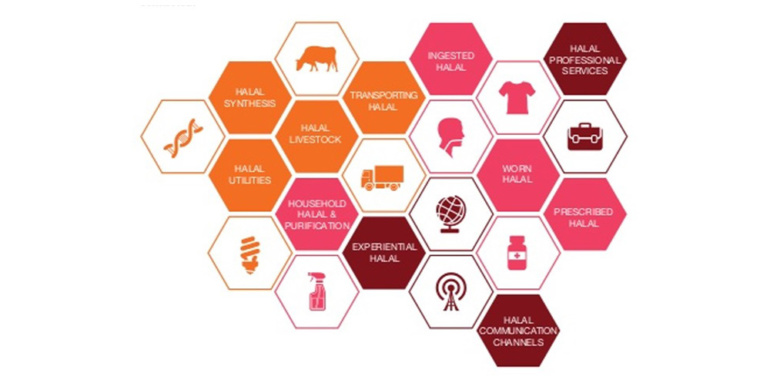GET IN TOUCH
- Please wait...

Modern Muslim consumers are considered by many as the single largest market in the world that has been overlooked by many brands in the past. The population currently stands at 1.8 billion and by 2050, the Muslim population is expected to grow to 2.6 billion representing nearly 30 percent of the global projected population.
Most marketers have missed the mark so far by addressing only the emotional drivers in order to build brand personality and image for the global consumers. As for the Muslim consumers, the story is a bit different. One just cannot play around with the emotional drivers only, understanding the core value system on which those emotional drivers are based on is also equally important in order to create a ripple through the mind of the Muslim consumers. If a company understands that an Islamic brand is primarily based on the ethics and values of Islam, they have won half the battle.
The purchasing power of this group is immense, growing at a rate of almost US$ 1.4 billion daily (US$ 500 billion annually) which is why most of the global brands are fighting over unlocking this genie from the bottle and unfold the treasure that was hidden all these while. There are 780 million Muslims under the age of 25, which is 43% of the total Muslim population and 11% of the entire global population. They are young, confident and proud of their identity with freedom and ability to purchase what they desire. The following grid will help marketers prioritize their focus and device a game plan for the global Muslim consumers.
©LightCastle Partners 2014
Fortune 500 companies like Unilever, Nestle, Citi NA,McDonalds, Tesco, Coke are all taking this market seriously and have made significant investment in order to provide Halal (acceptable to Muslims, in accordance with good practice) products in specific Muslim countries. World’s leading advertising firm Ogilvy and Mather has understood the potentiality of the market and has opened their Islamic branding wing Ogilvy Noor which publishes Noor Global Brand Index to identify and rank Muslim friendly brands (see table below).
Figure: Global Brand Index by Ogilvy Noor
On the flip side, there is also a huge risk for brands if they isolate the Muslim Consumers. One can explain them with the excerpt from Apple’s poster “You can quote them, disagree with them…But the only thing you can’t do is ignore them.” In 1998, Nike had to recall 38,000 pair of Nike Air shoes when the logo was declared by the Council of American Islamic Relations to be offensive to Muslims as it resembled the word ‘Allah’ in Arabic (See image below). After Denmark published the distorted photo of Prophet Muhammad (PBUH), their annual export volume of US$ 2.6 billion to Muslim countries literally disappeared. Even global tech giant Google was given a run for their money when their online video portal YouTube was banned in many Muslim countries for hosting the controversial video “Fitna” that disgraced Islam and the Prophet in recent years.
To avoid such instances, brand owners can develop a strong brand based on the ethics and values important to Muslim consumer group. The Ogilvy Noor report reveals how a successful Islamic brand can be created circling around the Muslim consumers and complying with the Islamic values by focusing on the following eight factors:
Muslim consumers must be targeted through a core product brand that stands up across a variety of markets. For this, it is important to develop a comprehensive range of products that are universally accepted by all Muslims. Moreover, the Halal market is not confined to Muslims only. It has also attracted the Non-Muslim consumers due to its perceived quality and health benefits. Non-Muslims are also inclining towards the Islamic Financial system because its core values – just equitable sharing of risk, and discouragement of excess leverage.
In conclusion, Islamic values can champion the cause of corporate social responsibility in both the Muslim and Western worlds. Values such as transparency, discipline, humility and purity are universal in their appeal. Islamic branded products offer a better future for all, as they are based in the values of goodness and justice. Value propositions should be designed in a way that will appeal to both Muslims and non-Muslims alike to move the addressable market from 1.8 billion Muslims to the full global population of 7 billion.
Our experts can help you solve your unique challenges
Stay up-to-date with our Thought Leadership and Insights